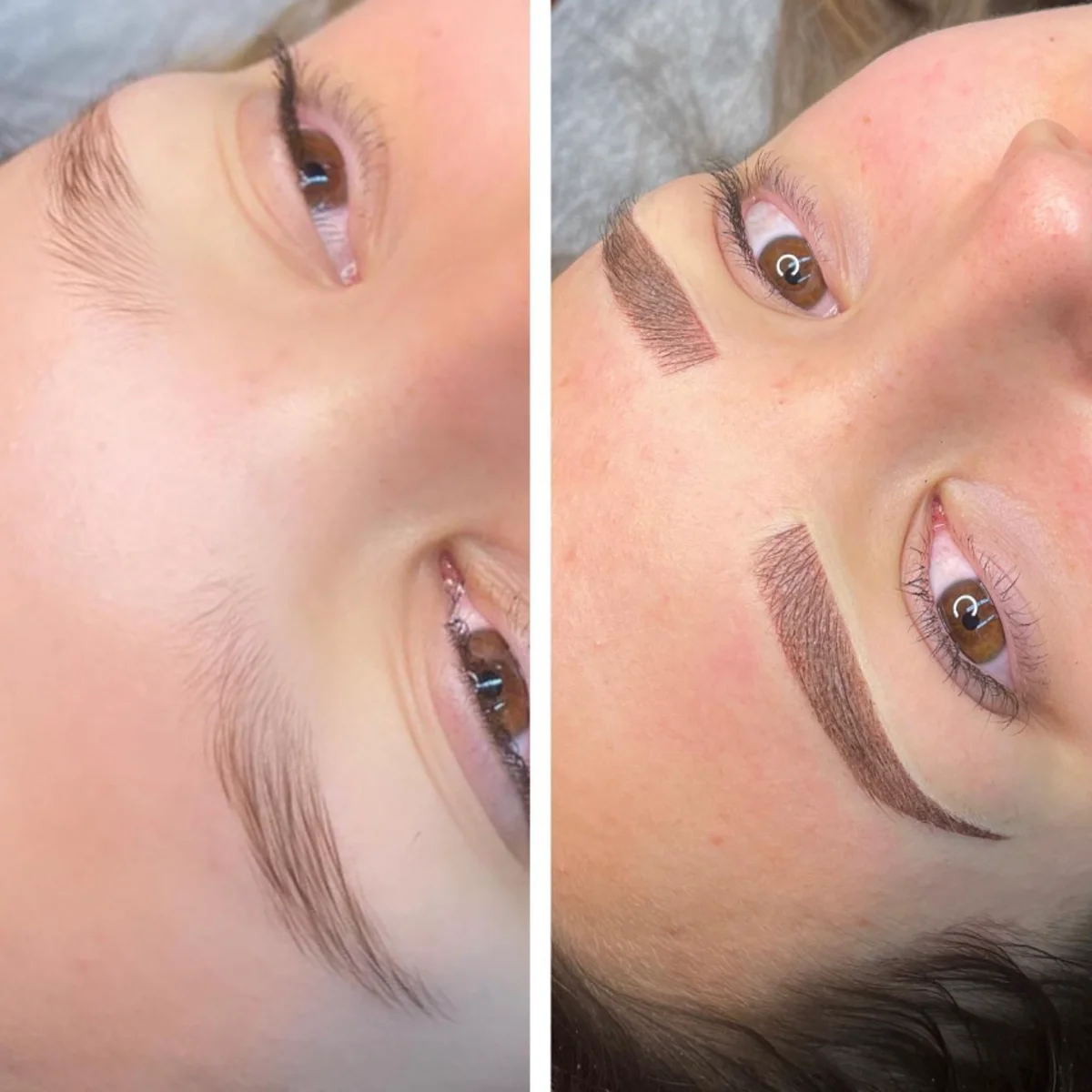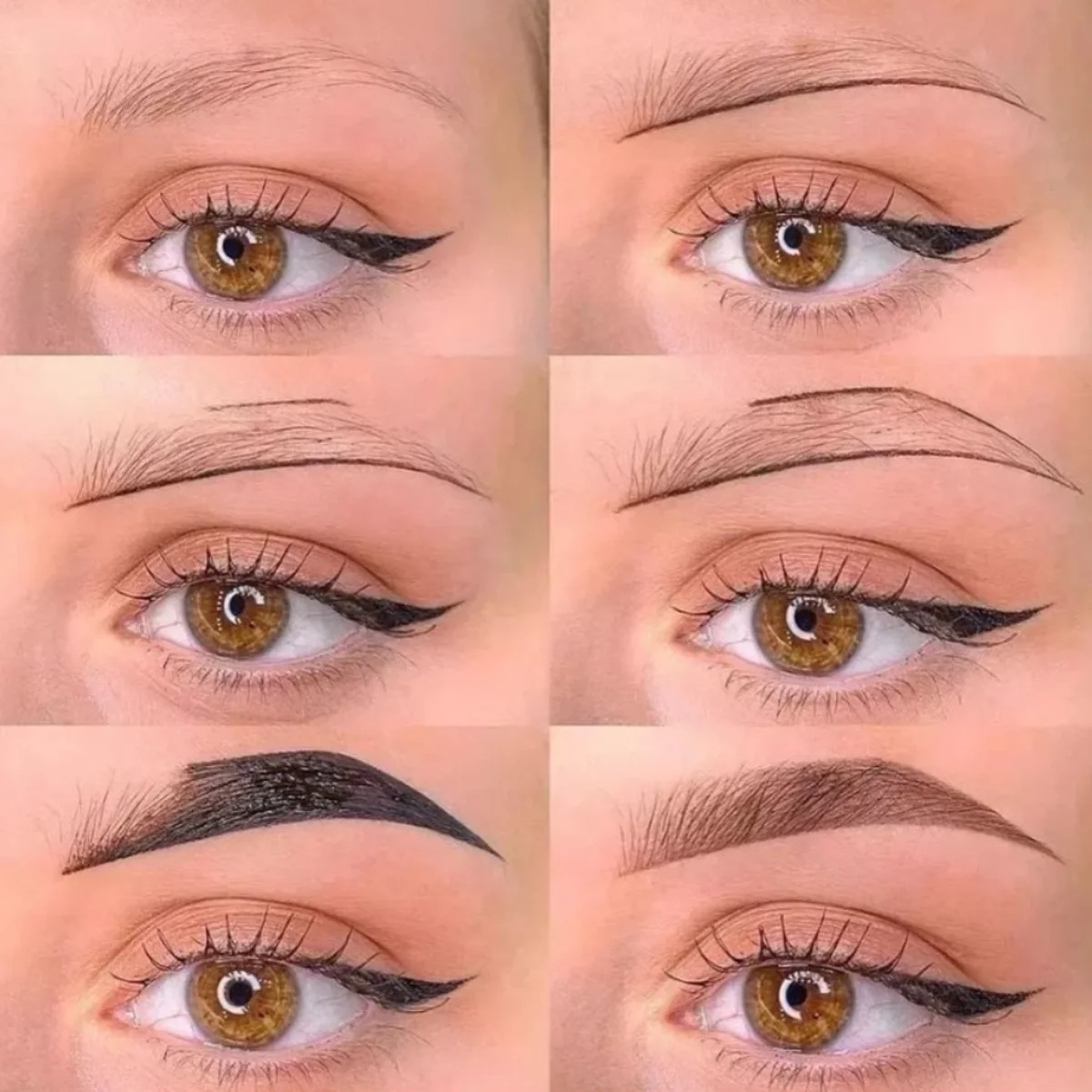Microblading vs. Ombre Powder Brows
Microblading might be a familiar term if you're aware of semi-permanent eyebrow tattoos. Its popularity surged in Australia over the past decade, thanks to social media, making it a preferred choice over traditional tattoo techniques. The shift is understandable, given the unappealing discolouration—purple, blue, or green—caused by conventional eyebrow tattoos. Microblading not only addressed this issue but also gained acclaim for its hyper-realistic effect, achieved through hair-like strokes etched into the skin.
Concurrently, a more sophisticated technique known as Ombre Powder Brows emerged in Asia, while microblading was gaining traction in the Western world. This method is also referred to as mist, powder, ombre shading, micro shading, or stardust brows.
What are Ombre Powder Brows?
Ombre Powder Brows stand out from traditional tattooing techniques as they are less invasive, involving only surface work on the topmost layer of the epidermis. True to its name, the outcome is powdery, featuring a crisp tail and a faded front reminiscent of makeup application. The term "ombre" signifies that the tail of the brow appears darker than the head. This procedure has swiftly gained popularity over microblading due to its additional advantages.
Ombre Powder Brows vs. Microblading
Microblading entails manually making incisions on the skin's surface, which are then filled with pigment. The artist individually crafts each hair to deliver fashionable, natural-looking eyebrows. However, this method is best suited for those with dry or normal skin—those with oily skin are better off opting for ombre powder brows. If your preference leans towards more featherlike, natural brows, microblading might be the right choice for you.
Conversely, the ombre powder technique is akin to brow tattooing, involving the artist implanting thousands of tiny pigment dots into the skin. Nonetheless, this technique is semi-permanent, unlike traditional tattooing, as the pigment is applied only to the epidermal layer of the skin. The result is solid, full, and powdered brows, giving the impression that you always have makeup on.

Both microblading and ombre brows are minimally invasive and, hence, relatively painless. The areas where these techniques are applied are numbed, so at most, you might experience some discomfort—comparable to the sensation of eyebrow plucking. The healing process for both is similar, ranging between two to three weeks. While both techniques are semi-permanent, ombre brows tend to last longer, up to three years, compared to one to two years for microblading.

Microblading is ideal for individuals with patchy or thin eyebrows who seek a subtle shape enhancement and do not regularly fill in their brows. Ombre powder brows are more suited for those with combination or oily skin who regularly use shadow or pencil to fill in their brows. It offers the appearance of beautifully filled-in brows without requiring daily effort.
FAQs
-
Differences in Procedure:
- Microblading: Utilizes a manual tool to create numerous fine hair-like strokes across the brow.
- Ombre Powder Brows: Employs a machine to achieve a soft shading effect.
-
Pigment Used in Ombre Brows:
- The pigments are oxide-based, safe, and designed to fade over time.
-
Candidate for Ombre Brows:
- Ideal for those who are not suited for microblading and desire a more "makeup" look without appearing unnatural or overly dramatic. Suitable for all skin types.
-
Pain Factor:
- Topical anesthesia is applied for comfort, but pain tolerance varies among individuals. Sensitivity may increase during the menstrual cycle.
-
Activities to Avoid During Healing:
- Avoid facials, saunas, steam baths, tanning, salt water, chlorinated water, sun exposure, and activities causing excessive sweating for up to two weeks.
-
Who is Not a Candidate:
- Under 18 years old
- Pregnant or nursing
- During or immediately after chemotherapy
- Used retinol products near the brows within the last 2 months
- Used Accutane within the past year or currently using it
- Have Rosacea
- Have a fresh sunburn or tan
- Using blood-thinning medications
-
Shaving Eyebrows Before Procedure:
- Not required. The aim is to enhance natural eyebrows without removing any natural hair.